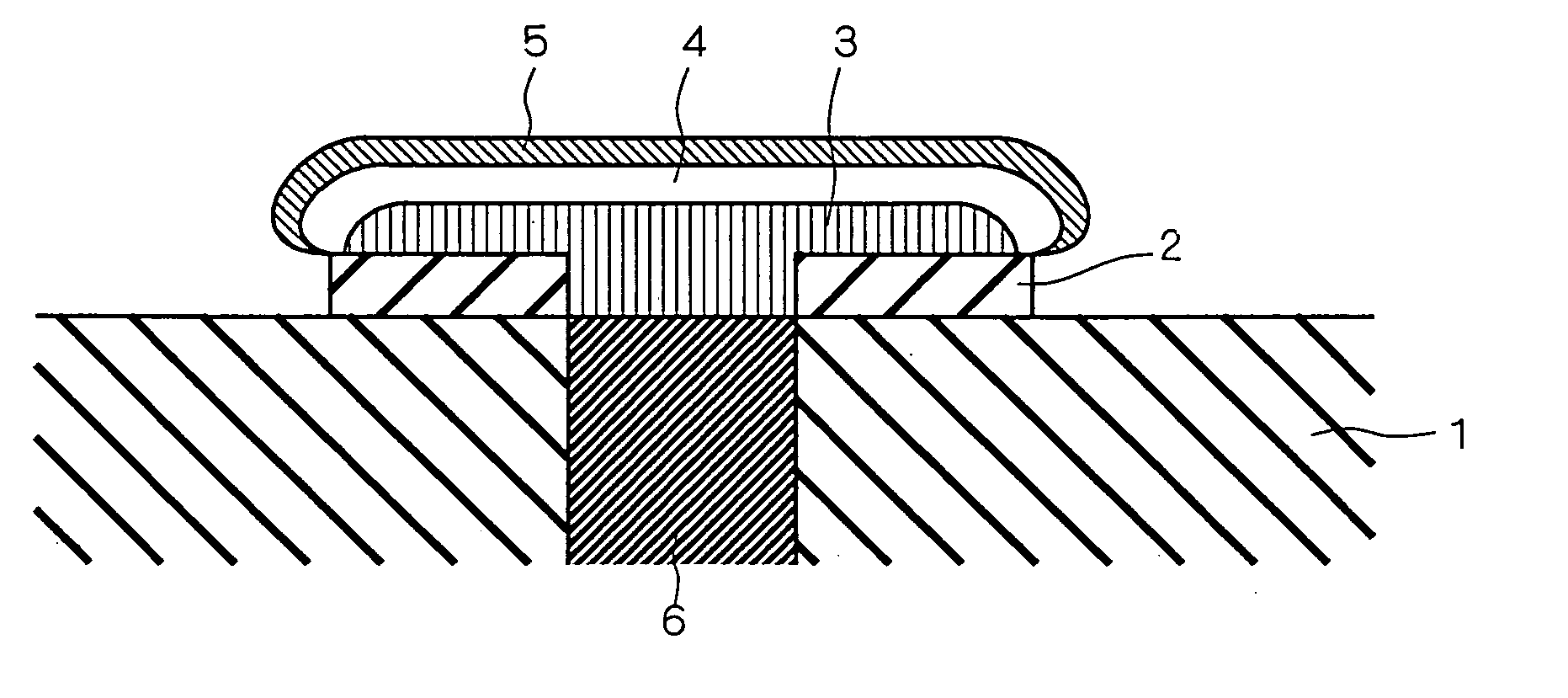Substrate
a technology of substrate and ceramic base, which is applied in the field of substrate, can solve the problems of large difference between the thermal expansion coefficient of the plating film and that cracks on the upper surface of the ceramic base, and cracks in the ceramic base, so as to reduce the occurrence of cracks on the upper surface of the base, improve productivity, and reduce the effect of cos
- Summary
- Abstract
- Description
- Claims
- Application Information
AI Technical Summary
Benefits of technology
Problems solved by technology
Method used
Image
Examples
Embodiment Construction
[0022] Hereinafter, specific discussion will be made on the present invention on the basis of figures showing preferred embodiments thereof.
[0023] The First Preferred Embodiment
[0024]FIG. 1 is a sectional view showing a structure of a glass ceramic substrate in accordance with the first preferred embodiment. More specifically, FIG. 1 is an enlarged sectional view showing a conductive portion 3 on which plating films 4 and 5 are formed and its vicinity.
[0025] As shown in FIG. 1, the glass ceramic substrate is a complex consisting of a base 1 formed of glass and ceramic (e.g., alumina and aluminum nitride, or the like), an intermediate layer 2, a conductive portion 3 and plating films 4 and 5.
[0026] Specifically, the intermediate layer 2 is formed into a convex shape on a main surface of the base 1. On the intermediate layer 2, the conductive portion 3 is formed. A nickel-plating film 4 and a gold-plating film 5 are formed on the conductive portion 3 in this order, covering the co...
PUM
| Property | Measurement | Unit |
|---|---|---|
| thickness | aaaaa | aaaaa |
| thickness | aaaaa | aaaaa |
| diameter | aaaaa | aaaaa |
Abstract
Description
Claims
Application Information
 Login to View More
Login to View More - R&D
- Intellectual Property
- Life Sciences
- Materials
- Tech Scout
- Unparalleled Data Quality
- Higher Quality Content
- 60% Fewer Hallucinations
Browse by: Latest US Patents, China's latest patents, Technical Efficacy Thesaurus, Application Domain, Technology Topic, Popular Technical Reports.
© 2025 PatSnap. All rights reserved.Legal|Privacy policy|Modern Slavery Act Transparency Statement|Sitemap|About US| Contact US: help@patsnap.com



